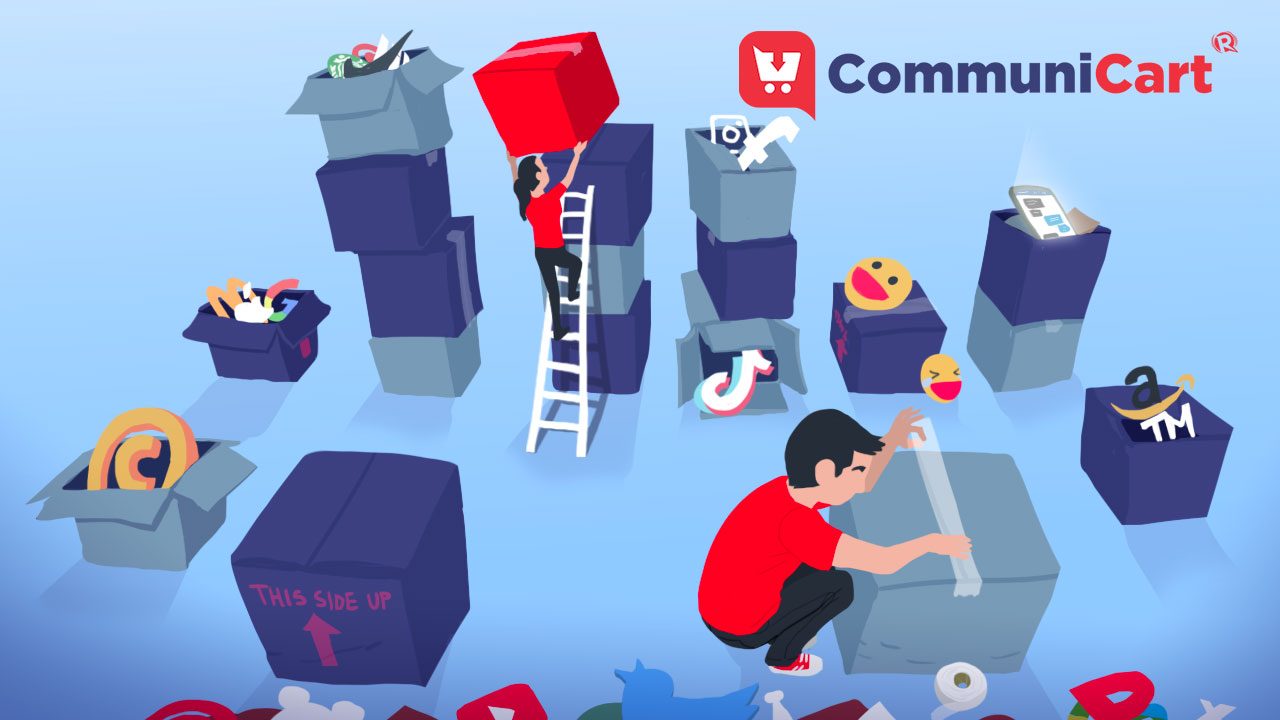SUMMARY
This is AI generated summarization, which may have errors. For context, always refer to the full article.

Editor’s note: CommuniCart features stories for and about MSMEs. It’s a space where small businesses can advertise at friendlier rates and also find helpful resources they can use to grow their brand. Work with us by emailing CommuniCart@rappler.com.
When it comes to branding a lot of business owners forget that branding isn’t just about the logo. Yes, your logo matters a lot, but it’s just the beginning when you’re talking about branding.
To help us sort out what branding exactly is and how to go about it, I spoke with Jelvin Base, a product designer and graphic artist. In our conversation, he shared about the basics of branding to get us started in the right direction.
The brand gap
There is no clear definition for what a brand is, but Base recommends following the one set by Marty Neumeier. Neumeier is the author of a book called “Brand Gap: How to bridge the distance between business strategy and design”. In the book, he wrote that branding isn’t really what you say about your business but what other people are saying. It’s the gut feeling people have towards your product, service, or organization
“Whatever happens, if you’re building a brand, you have to narrow the gap between how you’re perceived and how you want to be perceived,” Base explained. To narrow the gap, you need to implore all kinds of strategies, including but not limited to visual identity.
So where do you begin? Base recommended thinking about word association.
Keywords and branding manifesto
What comes first: the business or the brand? It’s actually a mix of both.
As you’re thinking about your business, chances are you’re also setting goals, thinking about products, and where to sell them. All of these details feed into how you form a branding manifesto.
To simplify this process, Base said to think of keywords that you want your business to be associated with. For example, if you think of “sports”, top brands like Nike and Adidas come to mind, or if you think “simple and clean” visual identity you think of Apple.
Find these words that you want to be associated with and write them down. These will not only be the building blocks of your branding strategy but also the anchor for when your business starts to grow and evolve in the future.
“Writing it down helps you manifest the things that you sought out to achieve. It’s helpful that you can come back to something that’s tangibly written down so that whenever you feel lost, it’s just there,” he added.
Don’t overthink your logo
Asked about the best way to design a logo, Base laughed and answered: “Have someone else do it, joke lang”.
Logos are the most upfront representation of your business, so it makes sense that most business owners would want to spend a lot of time working on one. Base, however, suggested that you set a deadline for yourself if you’re designing it on your own.
“You have to be okay with the work you’re doing. You have to acknowledge that this might not be good for now, [and that] you can always rebrand the business and have someone do it for you once you get the proper investment,” he said.
Base’s point is that if you already have a product or service that you’re ready to deploy, spending too much time and resources on a logo is losing you opportunities to make a profit. He also adds that chances are, people will remember you for the quality of your product and service when you’re starting out, not really the logo.
If you do decide on designing one yourself, he recommends looking up tutorials online to learn about shapes, colors, and typography. But if hiring a designer is within your budget, they can help you realize your vision as well as avoid any possible copyright infringements as images or even fonts could be privately owned.
Building trust
Once the basics of your visual identity is completed, you now have to work on building trust, cultivating a culture, and focusing on how your business impacts people. All of these elements play a significant role in the kind of brand you are able to build.
There isn’t an objective way of measuring this, but there are strategies you can implore. These can include having quick responses to questions or problems about your business, or maybe using a friendly and casual tone when you market your products. Everything you do feeds into how you build your brand.
“For example, if you’re running a business that requires a lot of trust but people find that things you are doing are dodgy or a little weird, that means you set off a different brand about yourself. It’s important for businesses to build on the brand consistently,” shared Base.
Other elements to consider include what kind of culture you’re cultivating, the impact your business is making for people, and what sets your business apart from your competitors.
Working with a professional
Having a brand strategist work for you isn’t essential when you’re starting out, but working with one will help in the long run once you’ve built your business enough and can afford to do so. A strategist, Base explains, can be a fresh pair of eyes that can remind you of your original goals and see areas to improve on objectively.
“If you’re stuck building your brand and business for a long time and you didn’t do anything about your brand, chances are you already have a bias towards it. And if you come to a point where oh matagal na ako sa business and I won’t change anything, but you see opportunities but you don’t have anyone telling you about these opportunities, that’s where a professional brand strategist comes in,” he said.
Base added that there is no ball park figure when it comes to hiring a strategist, but what you can do is decide how much you’re willing to invest (and for how long) and start from there.
“It really depends but there are instances where I create logos for a thousand dollars, and isang bagsakan, no questions asked. But that’s the price I was willing to work on and that’s the price the client was willing to pay.”
If you’re looking for strategists to help you, Base recommends looking through websites like Behance and Medium where strategists share case studies of their previous works.
A brand will continually evolve
Just as a business evolves, so should the brand. After all, your brand is how customers are perceiving you, right?
So when you see that your business is beginning to change, go back to your branding manifesto and ask yourself whether you will allow these changes to happen or will you revert to the original goals you set out to do.
Are there new keywords that people added to your brand? Are you okay with this kind of reputation, and are you willing to lean on it more?
It’s never too late to rebrand, so don’t be afraid if it has to happen in the future. – Rappler.com
Jelvin Base is a product designer and freelance graphic artist. Follow him on Behance.
Add a comment
How does this make you feel?





![[Good Business] Coalition of the willing](https://www.rappler.com/tachyon/2024/07/TL-Coalition-of-the-willing.jpg?resize=257%2C257&crop=423px%2C0px%2C1080px%2C1080px)

![[Good Business] Humanistic national development in the era of AI](https://www.rappler.com/tachyon/2024/06/tl-humanistic-development-of-AI.jpg?resize=257%2C257&crop=284px%2C0px%2C720px%2C720px)
![[Good Business] Redefining success, guided by values](https://www.rappler.com/tachyon/2024/06/TL-Philippines-business-La-Salle-june-12-2024.jpg?resize=257%2C257&crop=290px%2C0px%2C720px%2C720px)

There are no comments yet. Add your comment to start the conversation.